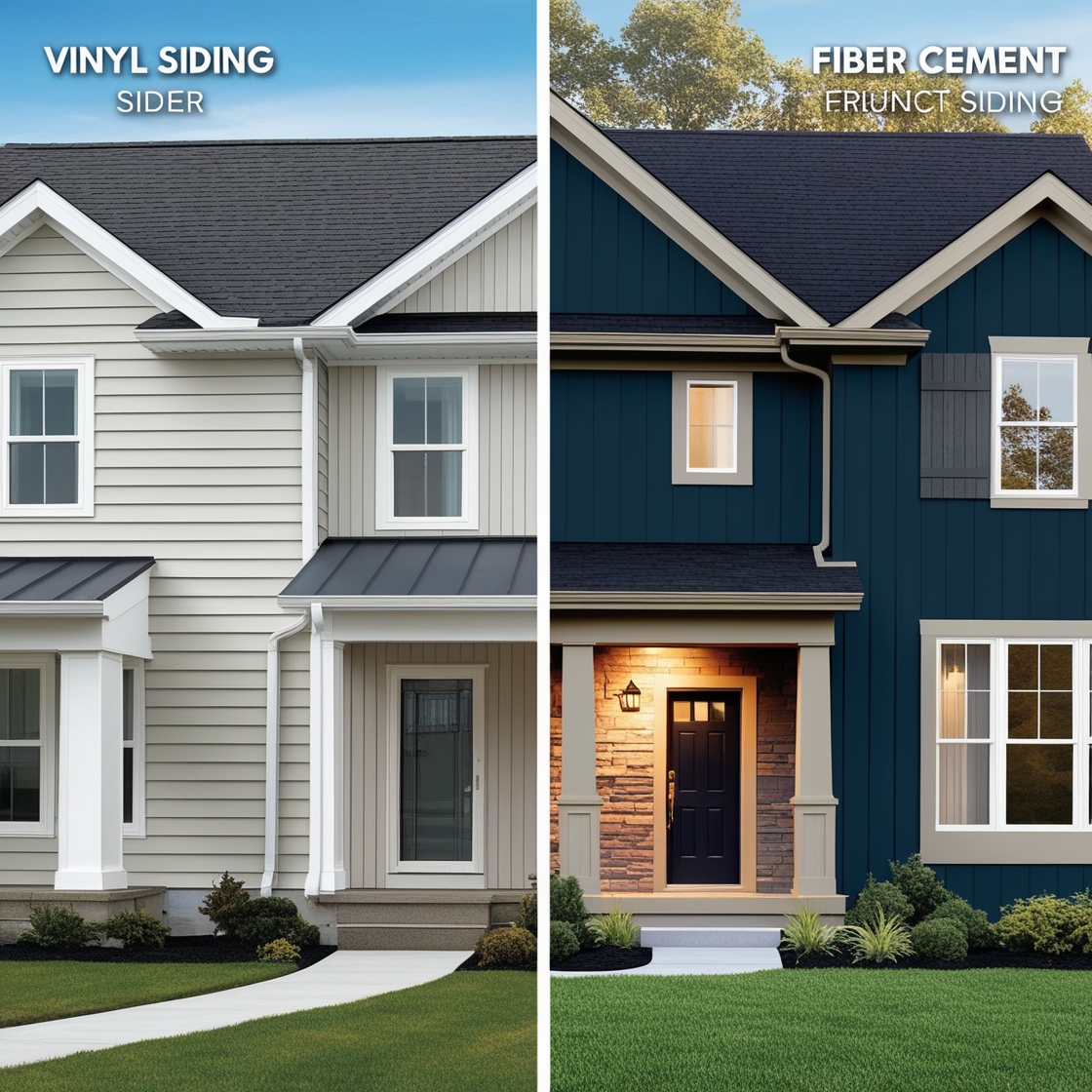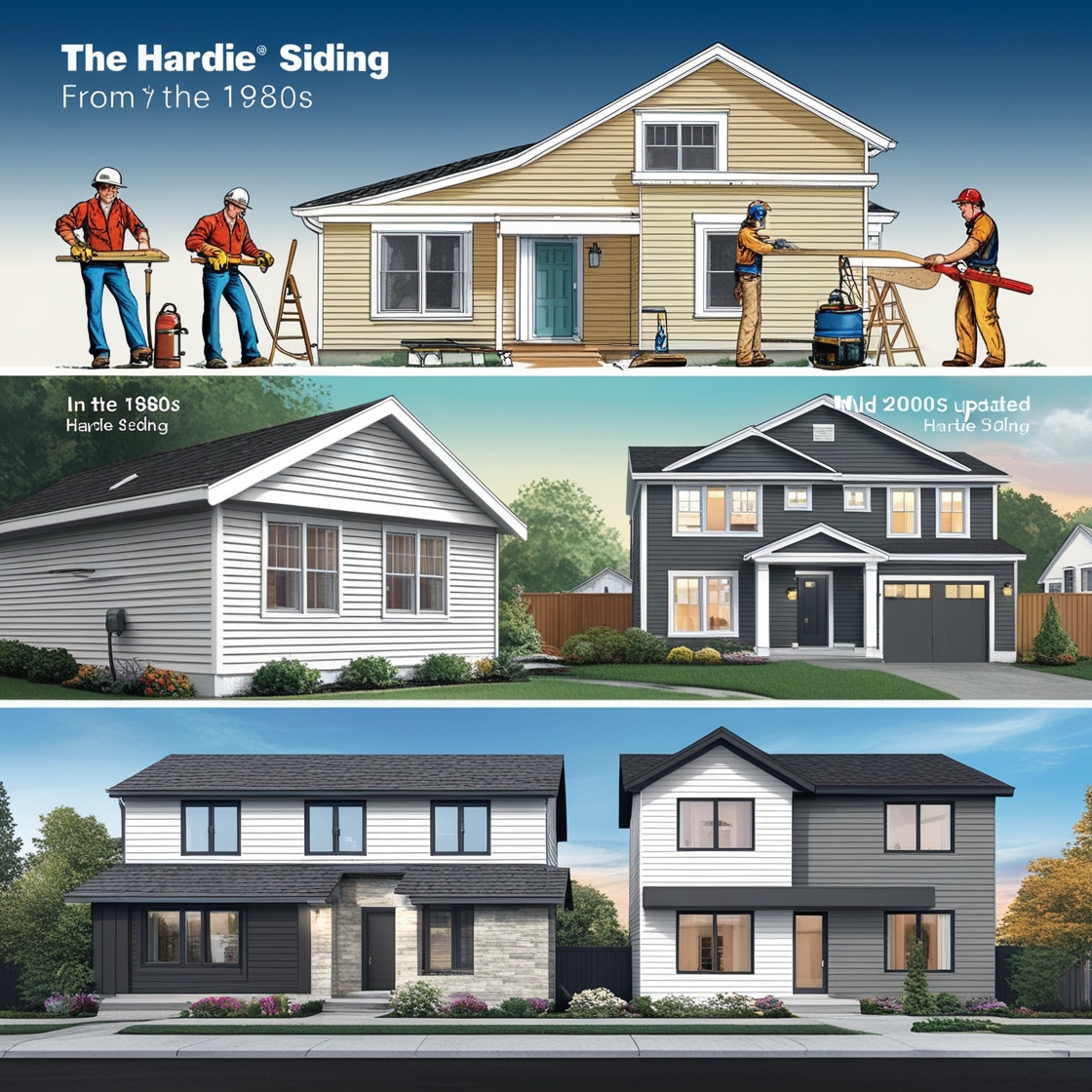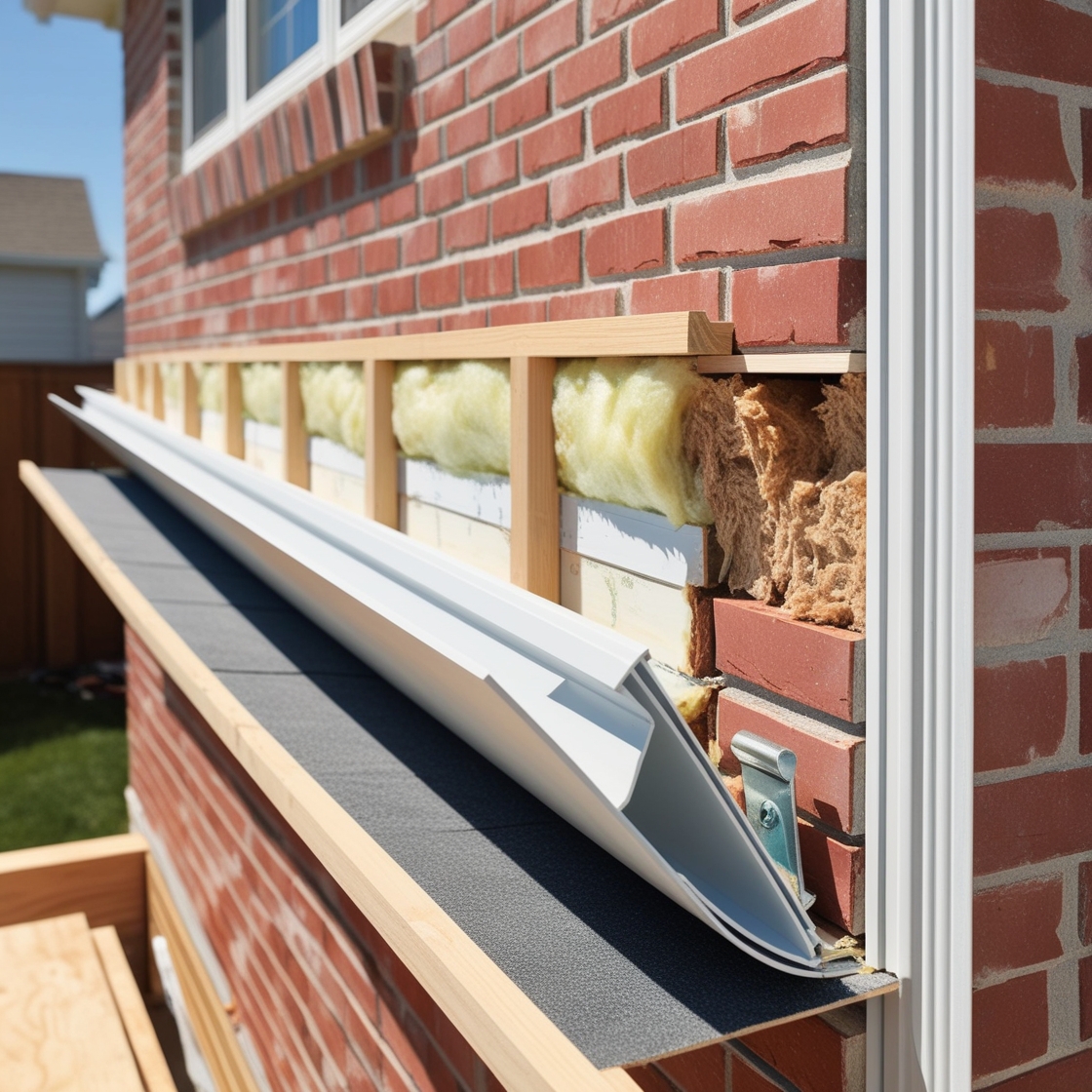Choosing the right siding for your home is a critical decision that impacts not only the appearance but also the durability, energy efficiency, and maintenance requirements of your property. Two of the most popular siding materials on the market today are vinyl and fiber cement. Each has its own set of advantages and drawbacks, making it essential to carefully consider which is best suited for your home. In this article, we will compare vinyl and fiber cement siding across several key factors to help you make an informed decision.
- When it comes to finding a siding company Bellingham residents can rely on, our team stands out for professionalism, top-tier materials, and unbeatable craftsmanship. Whether it’s new installation or repairs, we ensure your home is well-protected and looks fantastic.
1. Appearance and Aesthetic Appeal
Vinyl Siding: Vinyl siding is available in a wide range of colors and styles, making it a versatile option for homeowners who want to customize the look of their home. It can mimic the appearance of wood, stone, and even shakes, providing a high degree of flexibility in design. However, some people feel that vinyl siding can look artificial, particularly when compared to more natural materials.
Fiber Cement Siding: Fiber cement siding offers a more authentic appearance, especially when it comes to replicating the look of wood. It has a natural, solid feel and can be painted in virtually any color, allowing for greater customization. Fiber cement is often chosen by homeowners who want the traditional look of wood without the maintenance challenges.
Verdict: If you prioritize a natural, high-end appearance and are willing to invest in painting, fiber cement may be the better choice. However, if you want a low-maintenance option with a wide variety of styles, vinyl could be more appealing.
2. Durability and Longevity
Vinyl Siding: Vinyl siding is known for its durability, but it is not invincible. It can withstand most weather conditions, including rain, snow, and moderate wind, but it may crack or warp in extreme cold or intense heat. Vinyl is also susceptible to damage from impact, such as hail or flying debris, which can cause dents or holes.
Fiber Cement Siding: Fiber cement is one of the most durable siding materials available. It is highly resistant to weather, fire, pests, and impact. Unlike vinyl, fiber cement does not warp, crack, or fade as easily, making it an excellent choice for homes in harsh climates. Its long lifespan—often 30 years or more—adds to its appeal as a durable siding option.
Verdict: For maximum durability and longevity, fiber cement is the clear winner. However, if your home is in a mild climate and you’re concerned about cost, vinyl can still be a durable option with proper care.
3. Maintenance Requirements
Vinyl Siding: One of the biggest selling points of vinyl siding is its low maintenance requirements. It does not need to be painted, and cleaning it is as simple as using a garden hose or pressure washer to remove dirt and grime. However, if vinyl siding becomes damaged, repairs can be more complicated, and replacing individual sections may result in a noticeable color mismatch due to fading.
Fiber Cement Siding: Fiber cement siding requires more maintenance than vinyl, particularly when it comes to painting. While it is often pre-finished with a factory-applied paint, it may need to be repainted every 10 to 15 years, depending on the quality of the paint and the local climate. Cleaning fiber cement siding is also necessary but typically less frequent than vinyl. Additionally, while fiber cement is durable, any damage to the siding can be more costly and time-consuming to repair.
Verdict: If low maintenance is your top priority, vinyl siding is the better option. Fiber cement requires more upkeep but offers the advantage of being easily customizable through painting.
4. Cost Considerations
Vinyl Siding: Vinyl siding is generally more affordable than fiber cement, both in terms of material costs and installation expenses. It is lightweight and easy to install, which reduces labor costs. On average, vinyl siding costs between $3 and $8 per square foot, depending on the quality and style.
Fiber Cement Siding: Fiber cement siding is more expensive than vinyl, with costs typically ranging from $5 to $14 per square foot. Installation is also more labor-intensive, as fiber cement is heavier and requires specialized tools and techniques. However, the long-term durability and potential for increased property value can offset the higher initial cost.
Verdict: Vinyl siding is the more budget-friendly option upfront. However, if you can afford the higher initial investment, fiber cement may offer better value over the long term due to its durability and potential to boost your home’s resale value.
5. Environmental Impact
Vinyl Siding: Vinyl siding is made from polyvinyl chloride (PVC), a plastic that is not biodegradable and can release harmful chemicals during production and disposal. While some manufacturers offer recycled vinyl options, the overall environmental impact of vinyl siding is higher than more natural materials.
Fiber Cement Siding: Fiber cement siding is made from a mixture of cement, sand, and cellulose fibers, making it a more environmentally friendly option. It is a long-lasting material that does not require frequent replacement, reducing waste. Additionally, some fiber cement products are made with recycled content, further reducing their environmental footprint.
Verdict: If environmental impact is a significant concern, fiber cement is the more eco-friendly choice.
6. Installation Process
Vinyl Siding: Vinyl siding is relatively easy to install, which can reduce labor costs and project timelines. Many contractors are experienced with vinyl siding, and the lightweight material makes it easier to handle and secure to the exterior of a home.
Fiber Cement Siding: Fiber cement siding is more challenging to install due to its weight and the need for specialized tools. It requires skilled labor, which can increase installation costs and time. However, a well-executed installation will maximize the siding’s performance and longevity.
Verdict: For ease and speed of installation, vinyl siding is the better option. However, if you’re willing to invest in professional installation for a more durable product, fiber cement is worth considering.





